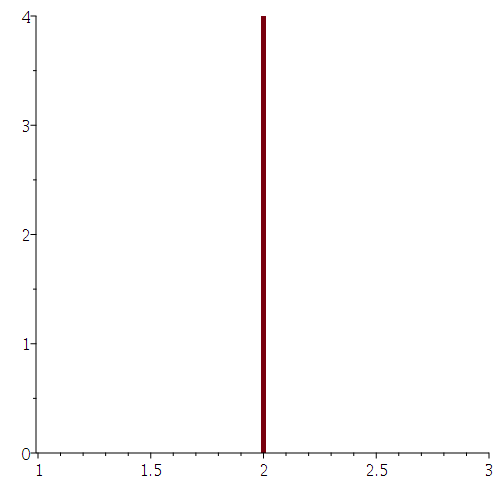Discontinuous functions
Vertical and horizontal lines

|
|
|
| Figure 1: Vertical line. | Maple code |
Point plots
with(plots):
pointplot([[1,2], [-1,2], [1,3]])
with(plots):
xlist := [0,1,2,3]:
ylist := [-1,1,-2,2]:
xylist := zip( (x,y) -> [x,y], xlist, ylist );
plot(xylist, style=point);
xylist := zip( (x,y) -> [y,x], xlist, ylist );
plot(xylist, style=point);
(a*b)/c+13*d
ur code
another line
\[ {\frac {ab}{c}}+13\,d \]
(a*b)/c+13*d
\[ {\frac {ab}{c}}+13\,d \]
Example:
**DESCRIPTION OF PROBLEM GOES HERE**
This is a description for some Maple code. Maple is an extremely
useful tool for many different areas in engineering, applied
mathematics, computer science, biology, chemistry, and so much
more. It is quite amazing at handling matrices, but has lots of
competition with other programs such as Mathematica and Maple. Here is
a code snippet plotting two lines (y vs. x and z vs. x)
on the same graph:
(a*b)/c+13*d
ur code
another line
\[ {\frac {ab}{c}}+13\,d \]
Two n-by-n matrices A and B are called similar if there exists an invertible n-by-n matrix S such that

